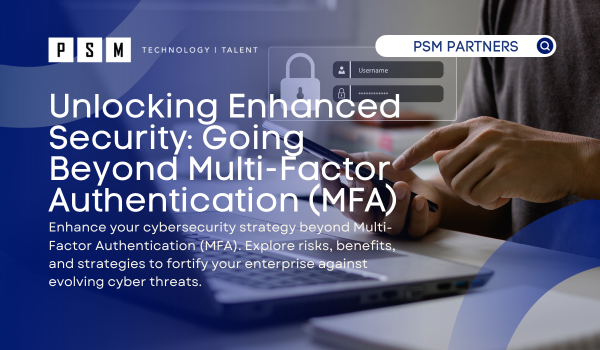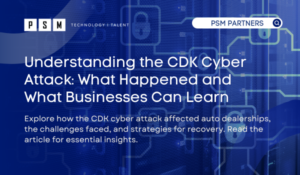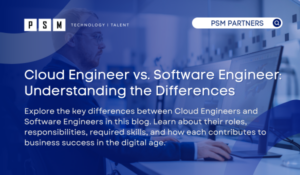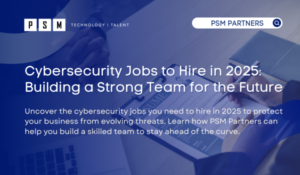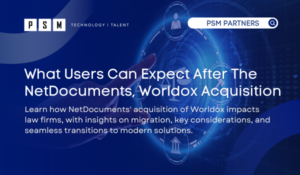Table of Contents
ToggleCybersecurity is more critical than ever in today’s digital age. As businesses rely increasingly on technology to operate, the risks associated with cyber threats have also grown exponentially. While Multi-Factor Authentication (MFA) is an essential layer of defense, relying solely on it may not be enough to safeguard your enterprise from evolving threats. In this blog post, we will explore the importance of going beyond MFA to protect your enterprise and ways to achieve this.
What is MFA?
Multi-Factor Authentication is a security protocol that requires users to provide two or more authentication factors before granting access to a system or application. Typically, these factors include something you know (like a password), something you have (like a smartphone), and something you are (like a fingerprint or facial recognition).
Benefits of MFA
Understanding the significance of MFA extends beyond knowing its function and operation. Here are six crucial reasons why integrating MFA into your business’s security strategy is imperative:
- Secure Against Identity Theft via Stolen Passwords
The landscape of password theft has evolved, utilizing tactics like keylogging, phishing, and pharming. These methods exploit vulnerabilities not only in unsuspecting individuals but also in large enterprises responsible for safeguarding user data. For instance, incidents like the sale of stolen Zoom login credentials on the Dark Web highlighted the repercussions of credential theft. MFA serves as a safeguard, fortifying your organization’s security even if passwords are leaked due to breaches in other companies.
Tip: Concerned about leaked passwords? Check your accounts’ status at https://haveibeenpwned.com/
- Protect Against Weak Employee Passwords
Despite continuous reminders on password security, widespread usage of weak passwords like “123456” or “password” remains prevalent. Shockingly, reports indicate that half of IT professionals reuse passwords across various workplace accounts, opening doors to potential breaches. Verizon’s Data Breach Investigations Report underlines that over one-third of malware-related breaches involve password dumper malware. MFA mitigates these risks by mandating multiple forms of authentication, nullifying hackers’ access even if passwords are compromised.
Tip: Check out how secure your passwords are: https://www.security.org/how-secure-is-my-password/
- Mitigate the Use of Unmanaged Devices
As remote and hybrid work models become commonplace, employees frequently use personal devices and less secure networks to access organizational networks. This trend, known as BYOD (Bring Your Own Device), has become a convenient but potentially risky practice. Compromised routers or personal devices lacking robust security measures pose substantial risks. MFA alleviates concerns about the security of remote employees’ devices and connections by fortifying access control, offering an additional layer of defense against unauthorized access attempts and potential breaches stemming from compromised personal devices.
- Enable Other Security Measures
While anti-virus software and firewalls bolster system protection, they rely on employees’ access credentials. In the event of a breach via stolen credentials, attackers can bypass these security measures, rendering them ineffective. MFA acts as a pivotal layer preventing unauthorized access, allowing other security tools to function optimally. Additionally, it serves as an alert system, flagging unauthorized access attempts.
- Increase Employee Productivity and Flexibility
Remembering passwords is a burden, leading employees to opt for simplistic and easily compromised codes. To counter this, organizations implement stringent password policies, leading to password forgetfulness and subsequent time-consuming resets. MFA streamlines access by offering varied authentication methods, like fingerprint scans or authenticator app-generated codes, fostering secure remote work and boosting productivity.
- Stay Compliant
Numerous state laws mandate strong authentication processes, especially for entities handling sensitive data. Compliance with identity and access management regulations like SOX for financial services or HIPAA for healthcare transactions is essential. MFA ensures alignment with these regulations, safeguarding sensitive information and mitigating legal risks.
Incorporating MFA into your security strategy transcends mere protection against password breaches. It’s a proactive measure that fortifies defenses, enhances operational efficiency, and ensures compliance in an ever-evolving threat landscape.
Limitations of MFA and How to Combat them
Despite its effectiveness in enhancing security, Multi-Factor Authentication (MFA) is not impervious to all cyber threats. Here are some ways hackers can compromise accounts or systems even when MFA is enabled:
Phishing Attacks: Hackers can exploit human vulnerabilities through sophisticated phishing tactics. They may trick users into providing their login credentials along with the secondary authentication code or token. If users fall for these deceptive schemes, the attackers gain access despite MFA being in place.
Man-in-the-Middle (MITM) Attacks: In a MITM attack, hackers intercept communication between a user and a legitimate system during the login process. By capturing both the primary login credentials and the secondary authentication code, attackers can gain unauthorized access to the account or system.
SIM Swapping: This method involves manipulating a mobile carrier into transferring a user’s phone number to a device controlled by the hacker. If MFA relies on SMS or phone call verification, hackers can intercept the secondary authentication code, effectively bypassing MFA.
Social Engineering: Hackers might manipulate individuals, including employees, into revealing sensitive information or providing access to their MFA devices. This could occur through various tactics such as impersonation, pretexting, or convincing users to bypass MFA under false pretenses.
Keylogging or Credential Theft: If malware infects a device and logs keystrokes, it can capture both primary login credentials and the secondary authentication code. This method allows attackers to access accounts despite the presence of MFA.
Authentication App Vulnerabilities: Some authentication apps might have security vulnerabilities that hackers can exploit to gain unauthorized access to the codes or compromise the authentication process.
While MFA significantly raises the bar for hackers and adds a crucial layer of security, it’s essential to remain vigilant and implement additional security measures to mitigate these potential risks.
Going Beyond MFA
Having only basic MFA measures in place might create a false sense of security. To bolster your enterprise’s security posture, consider implementing additional security measures that complement MFA. There are various ways malicious actors exploit known vulnerabilities and misconfigurations to breach systems. MFA is just one component of a broader security strategy that demands a comprehensive approach.
Here are strategies to consider:
- Behavioral Analytics:
Leverage behavioral analytics tools to monitor user activity and detect anomalies. By analyzing user behavior, you can identify suspicious activities and respond promptly to potential threats.
- Endpoint Security:
Ensure that all endpoints, such as laptops and smartphones, have robust security software installed or reporting back results in real-time. Regularly update and patch these devices to protect against vulnerabilities.
- Security Awareness Training:
Educate your employees about the latest cybersecurity threats and best practices. Organizations must continually educate their employees to not only use the technology available to them efficiently and securely but also to spot threats and report them at once. All the technology in the world does not secure against a well-planned social engineering attack. Consider using a cybersecurity education platform to educate and evaluate end-users on a semi-annual basis. Well-informed users are less likely to fall victim to phishing attempts or social engineering.
- Zero Trust Architecture:
Adopt a Zero Trust approach, which assumes that no one, whether inside or outside the organization, should be trusted by default. This strategy requires continuous verification and authentication for all users and devices.
- Incident Response Plan:
The most important of all, develop a comprehensive incident response plan to react swiftly in the event of a security breach. This plan should outline the steps to take, who to contact, and how to communicate with stakeholders during a security incident.
While Multi-Factor Authentication is a crucial element of your cybersecurity strategy, it should not be the sole reliance. To protect your enterprise effectively, it is essential to go beyond MFA by implementing a comprehensive security framework that includes behavioral analytics, endpoint security, employee training, and more. By doing so, you will not only reduce the risk of security breaches but also bolster your organization’s resilience in the face of ever-evolving cyber threats. In the world of cybersecurity, it is always better to be proactive than reactive.
Find out more about MFA in Microsoft 365: https://www.psmpartners.com/blog/multi-factor-authentication-microsoft-365/
Enhance Your Cybersecurity Defenses and Incident response Capabilities
Rely on PSM Partners, your steadfast partner in fortifying your IT infrastructure with top-notch cybersecurity solutions and swift incident response services. Operating out of Chicago, our specialization lies in delivering comprehensive managed services and unwavering support to institutions like yours.
Partnering with PSM Partners means empowering your organization with cutting-edge cybersecurity technology and unparalleled technical support. Don’t leave your cybersecurity preparedness to chance. Reach out to us today at (312) 940-7830 or fill out a contact form. Secure your IT infrastructure and ensure a prompt, effective response to any potential incident with our expert guidance and support.
Related Insights
Understanding the CDK Cyber Attack: What Happened and What Businesses Can Learn
Key Takeaways From the CDK Global Cyber Attack Massive DisruptionOn...
Read MoreCloud Engineer vs. Software Engineer: Understanding the Differences
In today’s rapidly evolving technology landscape, both cloud and software...
Read MoreCybersecurity Jobs to Hire in 2025: Building a Strong Team for the Future
The cybersecurity job market is evolving rapidly, driven by advancements...
Read MoreWhat Users Can Expect After The NetDocuments, Worldox Acquisition
Efficient document management is the key to the success of...
Read MoreAbout the Author

Marc Onorati
With a 12-year career in IT, Marc possesses a broad spectrum of technical skills, from System and Network Administration to roles like Network Manager, Lead Infrastructure Engineer, and Internal IT Manager. He's garnered invaluable insights from diverse companies, adapting to various IT environments, processes, and cultures. Marc's passion for technology fuels his continuous learning, allowing him to excel in assisting users and clients across all organizational levels, from interns to C-level executives.

